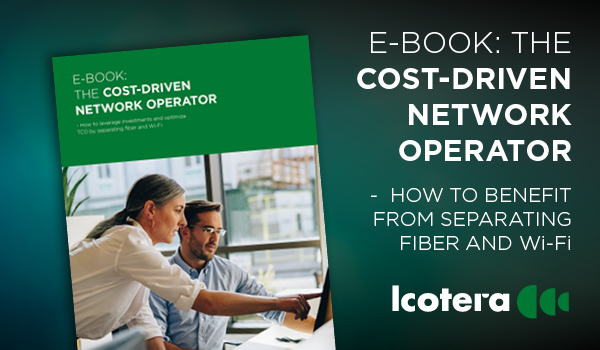The fiber networking technology standard, XGS-PON, makes it possible for network operators to get more value from their infrastructure by adding more end-users to the same line, while also offering higher internet speeds. This enables your network - and business - to meet the increasing demands from end-users in years to come.
Fiber rollouts are accelerating throughout Europe, and more and more homes are being connected to achieve the benefits of stable, high-speed fiber internet. The existing networks are strained to keep up with end-users’ demands, putting the current technology standard under pressure meaning many face a need to expand or upgrade to meet the needs of tomorrow.
Today, G-PON is the dominant network technology standard, but within a few years, this technology will no longer be sufficient. Instead, XGS-PON will take over and provide a more efficient utilization of existing lines in combination with higher internet speeds.

“XGS-PON adds four times as much speed to existing lines, and this allows the network operators to offer a better solution with higher speeds, while also getting the ability to connect more users to existing equipment and thereby improve their ROI in the long run.”
–Kim E. Jørgensen, CTO, Icotera
— XGS-PON is gaining a steady foothold. A few years ago, many operators couldn’t see the positive ROI of this technology, but now that has changed. Within the next decade, most will phase out G-PON and XGS-PON is next in line, says Kim E. Jørgensen, Chief Technology Officer at Icotera.
XGS-PON is the newest mature standard for passive optical networks, and just like any other technological leap, it comes with a range of benefits.
— Today, end-users consume more bandwidth than ever before, because of many in-home Wi-Fi- and heavy streaming activities. Their need for high-performing internet will only increase, and at some point G-PON will reach its limit of capacity. With XGS-PON, you’ll be able to deliver higher speeds and meet the expectations of end-users in the long run. This, among others, makes XGS-PON a future-proof investment, explains Kim E. Jørgensen and adds:
— XGS-PON adds four times as much speed to existing lines, and this allows the network operators to offer a better solution with higher speeds, while also getting the ability to connect more users to existing equipment and thereby improve their ROI in the long run.
A fiber collaboration
Some countries have been deploying G-PON for years, and they have a well established fiber infrastructure. Others haven’t started rollouts until recently, with XGS-PON being the leading solution but because of the two generations of technologies being able to run side by side, both first movers and newcomers get the benefits.
— The XGS-PON standard can co-exist with G-PON. This means that the existing fiber infrastructure does not need a fitting to accommodate the higher volume, but is already able to supply the higher speeds that will exceed one gigabit, says Kim E. Jørgensen.
And not only is XGS-PON providing faster speeds than ever before, it also adds a long-term perspective to the solution, as it improves installations with an expected lifespan for up to ten years which secures a very positive ROI.
— Five years ago, the conversion to XGS-PON would have been four-to-six times more expensive than today. Now, we’ve reached a level suitable for most budgets. Together with the fact that it is a future-proof investment for your business, XGS-PON is definitely a must-consider solution for most network operators, Kim E. Jørgensen concludes.
![]()
Interested in knowing more about the possibilities with XGS-PON?
Feel free to contact our Technical Program Manager, Jens Bundgaard at jbu@icotera.com
-----------------------------------------------------------------
CURIOUS on how open access fiber network open new business possibilities and whether a one-box or a two-box solution is the best choice?
Download our E-book: The cost-driven network operator - Enjoy the read!
Download E-book: The cost-driven network operator here:

